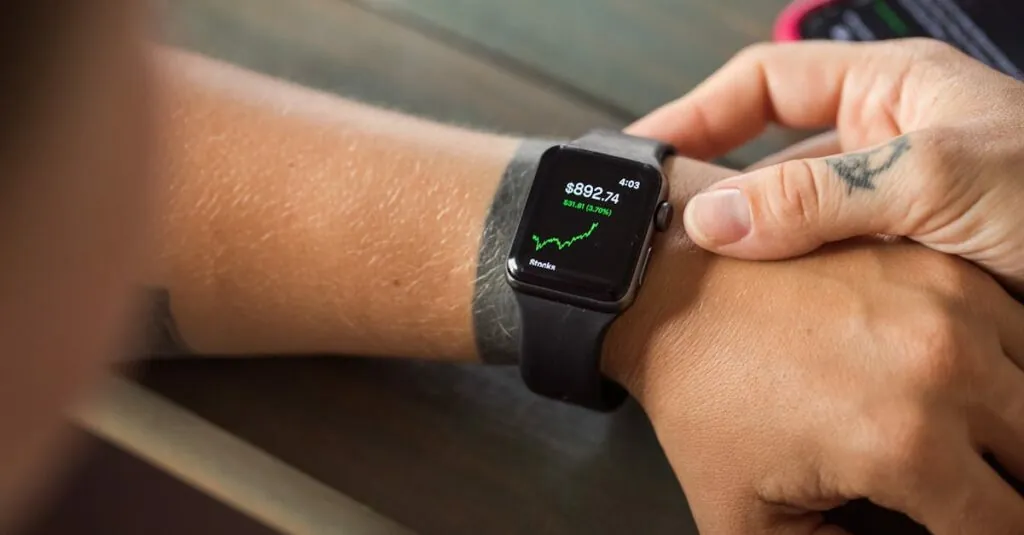Table of Contents
ToggleIn a world where your toaster can chat with your fridge, monitoring IoT devices has never been more crucial. Imagine your coffee maker sending you a text to say it’s out of beans—now that’s a wake-up call! With the rise of smart gadgets, keeping tabs on these devices is like herding cats; it sounds easy but can quickly turn chaotic.
Overview of Monitoring IoT Devices
Monitoring IoT devices enhances functionality and security in various environments. Devices often send data to cloud platforms for analysis, allowing users to track performance and identify issues. Emerging technologies like artificial intelligence and machine learning improve the ability to predict device behavior and automate responses.
Specific metrics play a crucial role in understanding device performance. Connectivity status, power usage, and response time are essential indicators. Alerts highly benefit users by providing real-time notifications when devices malfunction or require maintenance.
Data visualization tools deliver intuitive dashboards that simplify data analysis. Visual representations help users discern patterns and anomalies quickly. Integration of these tools improves decision-making processes, allowing for more efficient management of multiple IoT devices.
Security remains a top priority when monitoring these devices. Regular updates and firmware patches guard against vulnerabilities. Implementing strong authentication measures significantly reduces the risk of unauthorized access.
Establishing clear monitoring protocols enhances overall system reliability. Specific procedures outline how to respond to alerts, ensuring timely actions. Collaboration among devices can improve the overall ecosystem, leading to better resource management and data exchange.
In industries like healthcare, monitoring emphasizes patient safety and operational efficiency. Smart devices provide continuous health data that enables proactive care. In smart cities, real-time monitoring optimizes traffic flow and resource allocation, improving residents’ quality of life.
Understanding the significance of monitoring IoT devices reveals its impact across various sectors. Effective monitoring fosters a more connected, efficient, and secure environment for users in all aspects of daily life.
Importance of Monitoring IoT Devices
Monitoring IoT devices plays a crucial role in enhancing both security and performance in various environments. This process ensures effective management and integration of smart technologies.
Enhancing Security
Security remains a top priority in IoT device monitoring. Regular software updates protect against known vulnerabilities. Strong authentication methods safeguard access to devices and data. Real-time alerts notify users of suspicious activities, allowing for immediate responses to potential threats. Moreover, monitoring helps identify and rectify configuration issues before they lead to breaches. By ensuring devices operate within expected parameters, organizations maintain control over their networks and data integrity.
Improving Performance
Performance optimization of IoT devices comes through consistent monitoring. Tracking key performance metrics, such as connectivity status and response time, enables quick identification of issues. Analyzing power usage highlights inefficient devices that may require upgrades or replacements. Automated responses to performance anomalies minimize downtime and enhance user experience. Visualization tools transform data into actionable insights, facilitating better decision-making. Overall, regular monitoring leads to enhanced functionality and operational efficiency across all connected devices.
Methods of Monitoring IoT Devices
Monitoring IoT devices relies on various methods to ensure optimal performance and security. Understanding these methods enhances efficiency and reliability across connected devices.
Real-Time Monitoring Solutions
Real-time monitoring solutions track IoT devices continuously. These solutions provide up-to-date information on device status and performance. Alerts are generated for issues like connectivity loss or unusual activity. Tools like dashboards visualize metrics, making data interpretation straightforward. Users can respond quickly to malfunctions or threats. Integration with cloud services enables remote access and management, allowing users to monitor devices from anywhere. Automated reports supply regular updates, empowering users to maintain oversight and ensure devices function correctly.
Predictive Analytics
Predictive analytics utilizes historical and real-time data to forecast device performance. This method anticipates potential issues before they arise. Algorithms analyze patterns in data, identifying trends that may indicate failure or inefficiencies. By leveraging machine learning, predictive analytics enhances decision-making capabilities, ensuring timely responses to possible challenges. Alerts for likely failures allow users to schedule maintenance proactively, minimizing downtime. Businesses across industries benefit from increased operational efficiency and reduced costs, making predictive analytics an invaluable component of IoT device monitoring.
Key Challenges in Monitoring IoT Devices
Monitoring IoT devices presents various challenges that organizations must navigate to ensure the efficiency of their networks and the security of their data.
Data Privacy Concerns
Data privacy stands as a significant issue in the realm of IoT device monitoring. Sensitive information collected by devices can be susceptible to breaches. Unauthorized access may lead to identity theft or misuse of personal data. Encryption methods help protect data during transmission, but vulnerabilities still exist. Organizations should implement strict access controls and monitoring protocols. Compliance with regulations like GDPR ensures that data handling meets legal standards. Transparency about data usage also builds trust with users, making it essential to provide clear privacy policies.
Network Reliability Issues
Network reliability poses another major challenge in monitoring IoT devices. Disruptions can arise from hardware failures or software bugs. A disconnected device often leads to data loss or delayed responses, impacting overall functionality. Ensuring sufficient bandwidth is crucial, as congestion can slow down communication between devices. Regular testing and maintenance help identify potential issues before they escalate. Implementing redundancy measures can also enhance network reliability, providing alternative pathways for data transmission. Ultimately, a resilient network supports seamless monitoring and operational efficiency.
Future Trends in Monitoring IoT Devices
Augmented analytics will redefine how data is interpreted. Users benefit from systems that automatically generate insights using artificial intelligence. Expanded integration of edge computing enhances real-time data processing. Devices analyze information locally, reducing latency and bandwidth consumption.
Increased emphasis on cybersecurity will shape monitoring practices. Organizations prioritize security protocols such as end-to-end encryption. Continuous threat detection mechanisms will safeguard sensitive data from breaches. Proactive monitoring tools will alert users to vulnerabilities before exploitation.
Adoption of 5G technology will revolutionize IoT device connectivity. Higher speeds significantly improve data transfer rates, supporting more devices simultaneously. This advancement ensures seamless communication between devices, enhancing operational efficiency. Enhanced connections also enable more robust real-time monitoring capabilities.
Greater use of blockchain technology may increase reliability and trust in the data collected. Distributed ledger systems track device interactions, providing transparent logs and minimizing data tampering. Such solutions can facilitate secure transactions across industries, particularly in healthcare and finance.
Greater focus on sustainability will impact IoT device development. Companies seek energy-efficient monitoring solutions to align with environmental goals. Smart devices that optimize power usage can significantly reduce operational costs and carbon footprints.
Finally, democratization of IoT monitoring tools will make the technology accessible to smaller businesses and individuals. User-friendly platforms will emerge, enabling non-technical users to monitor devices efficiently. Increased accessibility fosters innovation, allowing more players to participate in the IoT ecosystem.
Monitoring IoT devices is essential for maximizing their benefits while addressing potential challenges. By implementing robust monitoring solutions, users can enhance security and improve operational efficiency. The integration of emerging technologies like AI and machine learning provides valuable insights that facilitate proactive maintenance and timely responses to issues.
As industries continue to evolve, the importance of real-time monitoring will only grow. Organizations must prioritize data privacy and network reliability to build trust and ensure seamless functionality. Embracing future trends like edge computing and 5G technology will further transform the landscape of IoT device monitoring, making it more effective and accessible. Ultimately, a commitment to diligent monitoring fosters a secure and efficient environment for all users.







